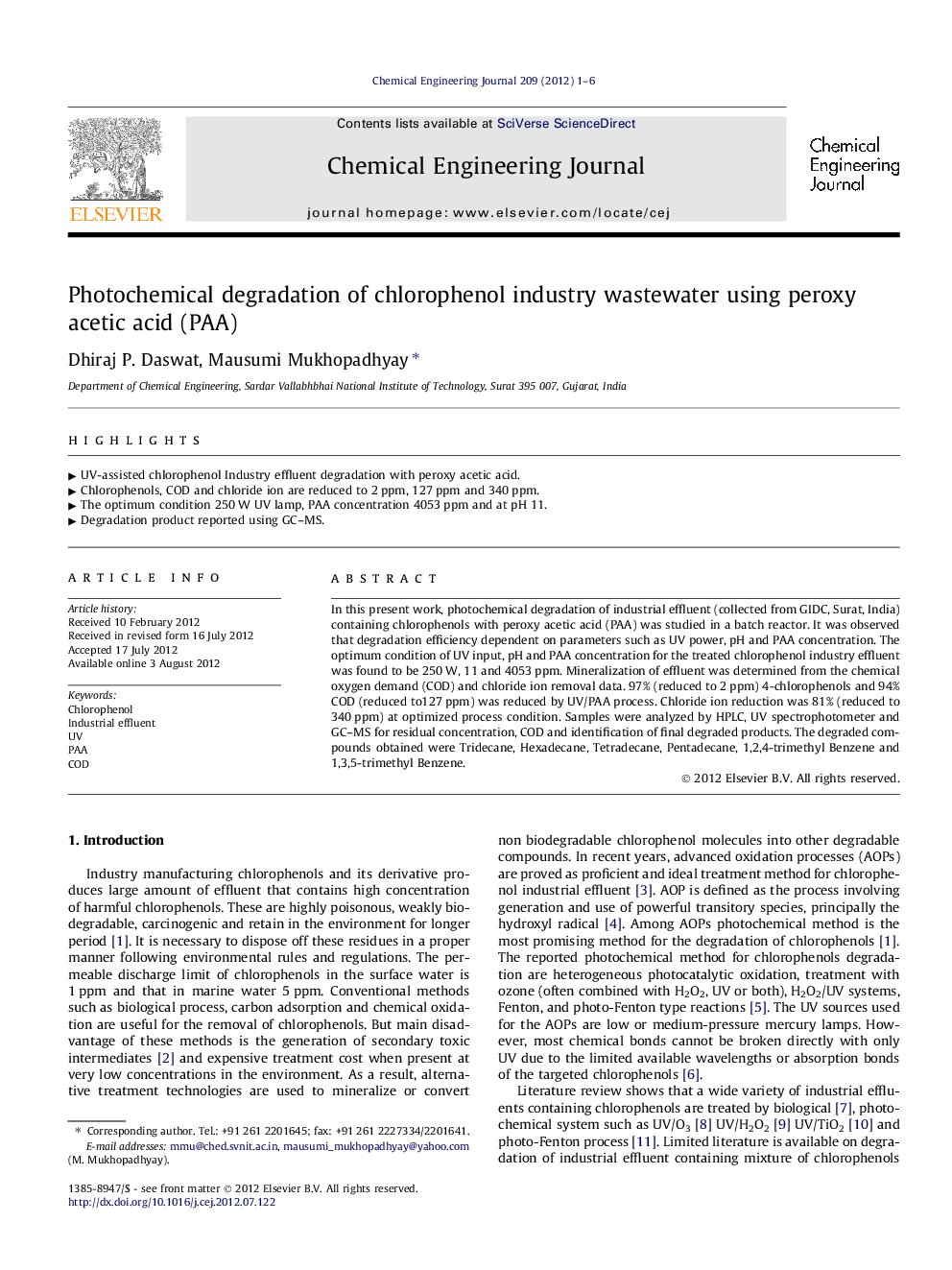| کد مقاله | کد نشریه | سال انتشار | مقاله انگلیسی | نسخه تمام متن |
|---|---|---|---|---|
| 149187 | 456429 | 2012 | 6 صفحه PDF | دانلود رایگان |

In this present work, photochemical degradation of industrial effluent (collected from GIDC, Surat, India) containing chlorophenols with peroxy acetic acid (PAA) was studied in a batch reactor. It was observed that degradation efficiency dependent on parameters such as UV power, pH and PAA concentration. The optimum condition of UV input, pH and PAA concentration for the treated chlorophenol industry effluent was found to be 250 W, 11 and 4053 ppm. Mineralization of effluent was determined from the chemical oxygen demand (COD) and chloride ion removal data. 97% (reduced to 2 ppm) 4-chlorophenols and 94% COD (reduced to127 ppm) was reduced by UV/PAA process. Chloride ion reduction was 81% (reduced to 340 ppm) at optimized process condition. Samples were analyzed by HPLC, UV spectrophotometer and GC–MS for residual concentration, COD and identification of final degraded products. The degraded compounds obtained were Tridecane, Hexadecane, Tetradecane, Pentadecane, 1,2,4-trimethyl Benzene and 1,3,5-trimethyl Benzene.
► UV-assisted chlorophenol Industry effluent degradation with peroxy acetic acid.
► Chlorophenols, COD and chloride ion are reduced to 2 ppm, 127 ppm and 340 ppm.
► The optimum condition 250 W UV lamp, PAA concentration 4053 ppm and at pH 11.
► Degradation product reported using GC–MS.
Journal: Chemical Engineering Journal - Volume 209, 15 October 2012, Pages 1–6